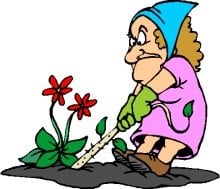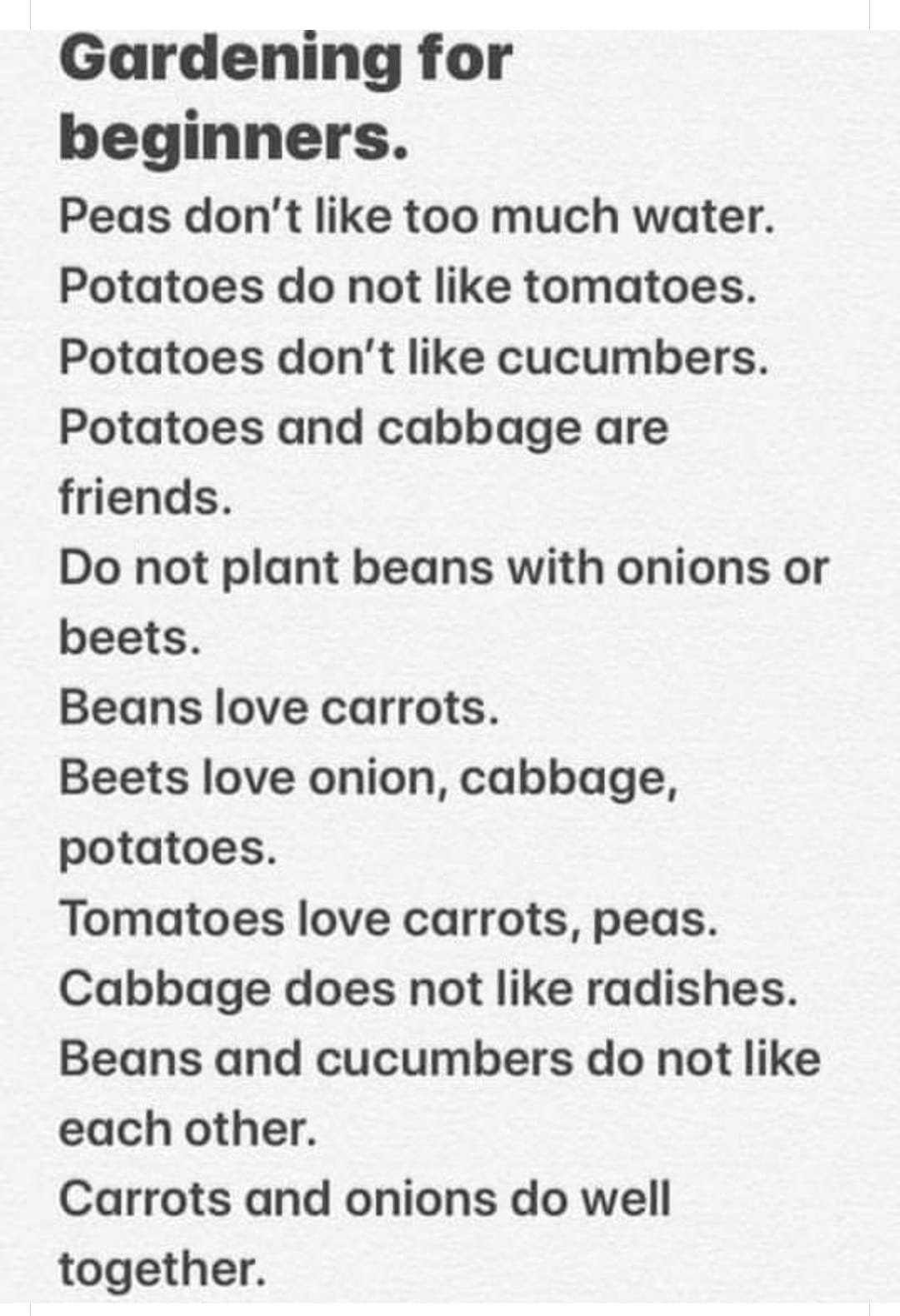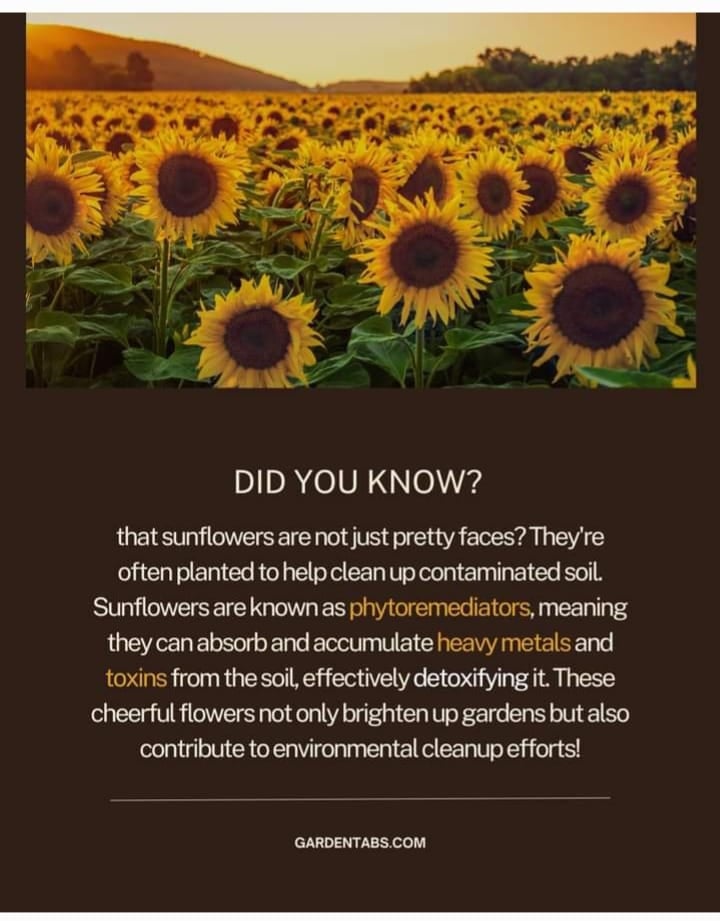NEW POSTINGS - view tabs below for additional information
Flower Arrangers - June
Charleswood Garden Club - URBAN RETREATS GARDEN TOUR, June 22
Steinbach and Area Garden Club 25th Anniversary Garden Tour and High Tea - July 14th
2024 SJHS Speaker List & Upcoming Events
July 16, 2024 - Potluck at the Garden.
September 17, 2024 – Potluck at the Garden
October 15, 2024 – Speaker: Lois Grieger on “Seed Saving”
November 19, 2024 – 2024 AGM
Contact us
Email:  stjameshort@gmail.com
stjameshort@gmail.com
SJHS Website: ( stjameshorticulturalsociety.ca)
stjameshorticulturalsociety.ca)
– please visit if you would like to sign up for our newsletter
Facebook: St. James Horticultural Society
Instagram: st_james_horticultural_society
2024 GARDEN GUIDELINES FOR
1) All gardeners must be paid members of the St James Horticultural Society (SJHS). Children under the age of 18 are welcome and do not require a membership. Please inform the Garden Committee when there are changes to your contact information at stjameshortgardens@gmail.com.
2) Garden fees of $30 per plot must be paid by January 15th. While fees help cover a portion of the garden operating costs, the Society relies on garden members to volunteer their time for various garden tasks.
3) Gardeners must start work in their garden plots by June 1. After this date, the garden plot will be forfeited if work has not begun.
4) Water will be turned on mid-May and turned off mid-September, weather dependent.
a) Please use water wisely.
b) Garden hoses must not be connected to the community water taps.
c) Garden produce, garden utensils and boots can be washed at home or within your garden plot, but not at the community water taps.
5) At the end of the growing season remove tools, barrels, ropes, and any objects that the wind could blow off the garden plot.
6) Gardeners can choose to manage the garden plots using either no-till or tillage garden practices, however no-till is encouraged. No-till or no-dig gardening is the practice of avoiding to turn the soil over using a rototiller, garden fork or spade. Tilling (or conventional gardening) is the practice of disrupting or turning the soil over in the spring or fall using a rototiller, garden fork or spade. Go to https://gardening.usask.ca/ for more information about no-till gardening.
Regardless of the garden management approach chosen:
a) Gardeners are encouraged to add organic matter like compost, straw, or manure to the soil to increase soil fertility and tilth. (see point #8 below for more detail for managing organic material)
b) Gardeners are encouraged to compost organic material (such as carrot tops, and tomato and bean plants) on the garden plot.
c) Gardens should be kept free of weeds, insects, and diseases.
d) Synthetic pesticides (insecticides and herbicides) are not permitted.
e) The use of organic fertilizers is recommended, rather than synthetic fertilizers.
f) Flowers should be planted within your garden plot. This will help attract pollinators and contribute to the beauty and enjoyment of the community garden.
g) Should you have questions or experience garden management challenges, please contact your Garden Committee by emailing stjameshortgardeners@gmail.com.
7) Gardeners are encouraged to compost (leave) all organic material on their garden plot to increase the fertility of the soil. Alternatively, excess organic material can be placed into compostable paper yard bags and deposited on the roadside next to the garden shed on Albany Street for the City of Winnipeg to remove. Organic garden materials must not be dumped on the roadways and grassed perimeter of the community gardens.
8) Gardeners are to adhere to the following guidelines to promote our collective sense of community, enjoyment, and safety:
a) Respect our gardens by always using garden pathways and not trespassing on other members' garden plots.
b) For the safety of children, please ensure water containers and barrels are securely covered.
c) Dogs, cats, and other pets are welcome on the roadways and grassed perimeter of the community gardens, but not within the garden pathways or garden plots.
d) Pathways are to be kept open and unobstructed. You are encouraged to keep the pathway alongside your garden plot weed free. Placing mulch, like straw or lawn clippings, on the pathway can help.
e) White stakes with the red tops are the property of the SJHS and are not to be moved or removed.
f) You are encouraged to enclose your garden with a rope. Ropes can be attached to the white corner posts of your plot. Remove ropes at the end of the growing season.
g) Please take all garbage home.
9) Administration of Garden Plots:
a) The Garden Committee is responsible for allocating plots to returning and new gardeners. A waiting list is maintained.
b) A maximum of two (2) plots will be assigned to a family. Additional plots can be assigned for one (1) year should they be available but only after the waiting list has been exhausted.
c) Returning gardeners in good standing will retain the same plot from year to year.
d) Gardeners cannot re-assign their plots.
10) Finally, above all – show and practice respect for others during our time at the garden. Reflection, meditation, socializing, fun, flowers, and food – some of the reasons so many of us enjoy spending time at the community garden.

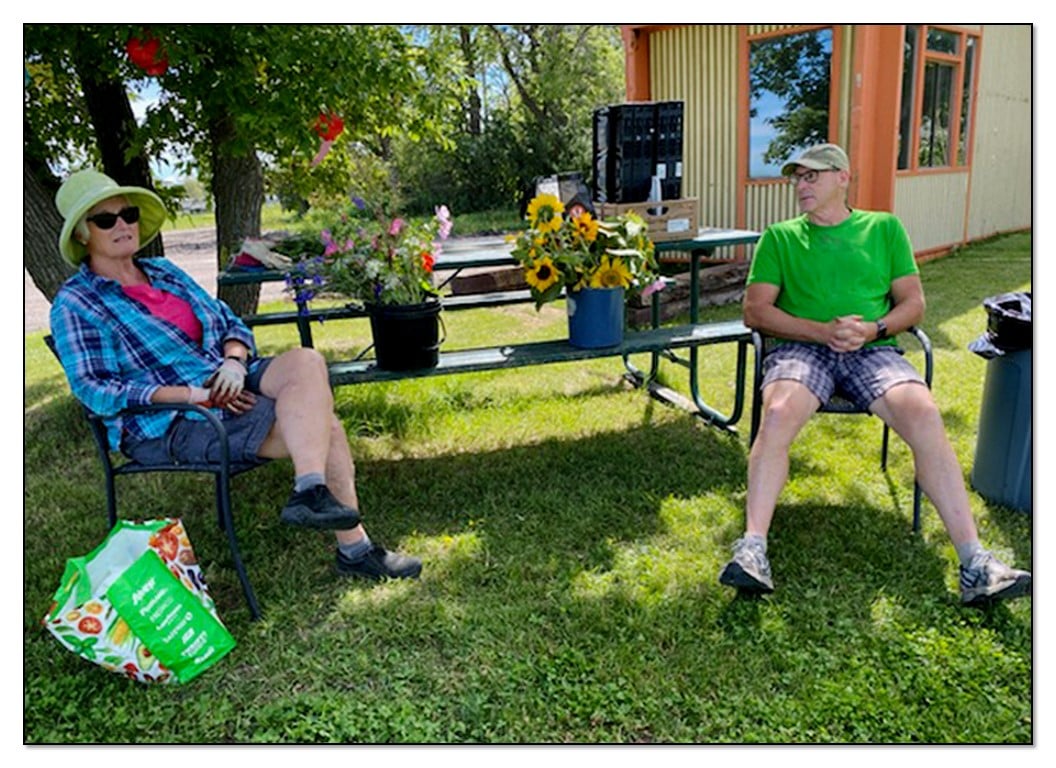
GARDENING 2023
Hello St James Gardeners!
Best of the Holiday Season to Everyone!
Gardening Season is around the corner!
This email is being sent on behalf of the Garden Committee of the St James Horticultural Society.
The all-volunteer committee directs and manages the Gardens.
This email is to notify you of some of the committee works and requirements of the last 2 months.
The committee hopes to increase management at the gardens and have all plots rented and tended in 2023.
Therefore, here is some of the information and important dates we want you to know.
Information Regarding Gardening in 2023 at Silver and Albany
1. All plots have been renumbered. All plot locations remain the same. No plots have been changed.
Each plot is numbered and all plots are now considered whole plots.
Renters with double plots still have double plots - now each plot is individually numbered.
Why? To make it clearer to find plots and keep track of them.
2. The rental fee for plots increases from $25 to $30 per plot. This includes the water fee. People renting multiple plots will pay $30 per plot. St James Horticultural membership fees remain the same at $15 and are due. Each adult gardener is to pay a horticultural membership.
Why? To prevent losses in a tight budget, to do more projects, and to provide fairness as previously half plots costs actually supplemented the full plots. To make fees clearer and simpler.
3. Deadlines to keep in mind.
Please respond if you are returning to the garden by January 15th, 2023. (Sorry about the short notice, but the committee wants to make sure all plots can be filled and this means they need to know which plots are available)
If you are returning this year after payment is complete, you may access your garden as the pathways are intact. If spring is early, we can put in those cold-loving crops such as peas, onions and lettuce.
All fees are due by February 15, 2023. The most efficient way to pay membership and garden fees is directly by e-transfer to stjamesgardenregist@gmail.com Cheques are payable to The St James Horticultural Society and mailed to Box 42086, 1881 Portage Avenue, Winnipeg, MB R3J 3X7. Cash is no longer accepted due to all the work involved for volunteers to handle it. Sorry about any inconvenience. Thank you for your support.
stjamesgardenregist@gmail.com Cheques are payable to The St James Horticultural Society and mailed to Box 42086, 1881 Portage Avenue, Winnipeg, MB R3J 3X7. Cash is no longer accepted due to all the work involved for volunteers to handle it. Sorry about any inconvenience. Thank you for your support.
Look for more emails in the upcoming months as the committee will keep you informed.
Best
Garden Committee
Co-Chairs Nathanael and George
St James Horticultural Society
Get Growing Est.1914
Box 42086 • Portage Avenue
Winnipeg • MB • R3J 3X7

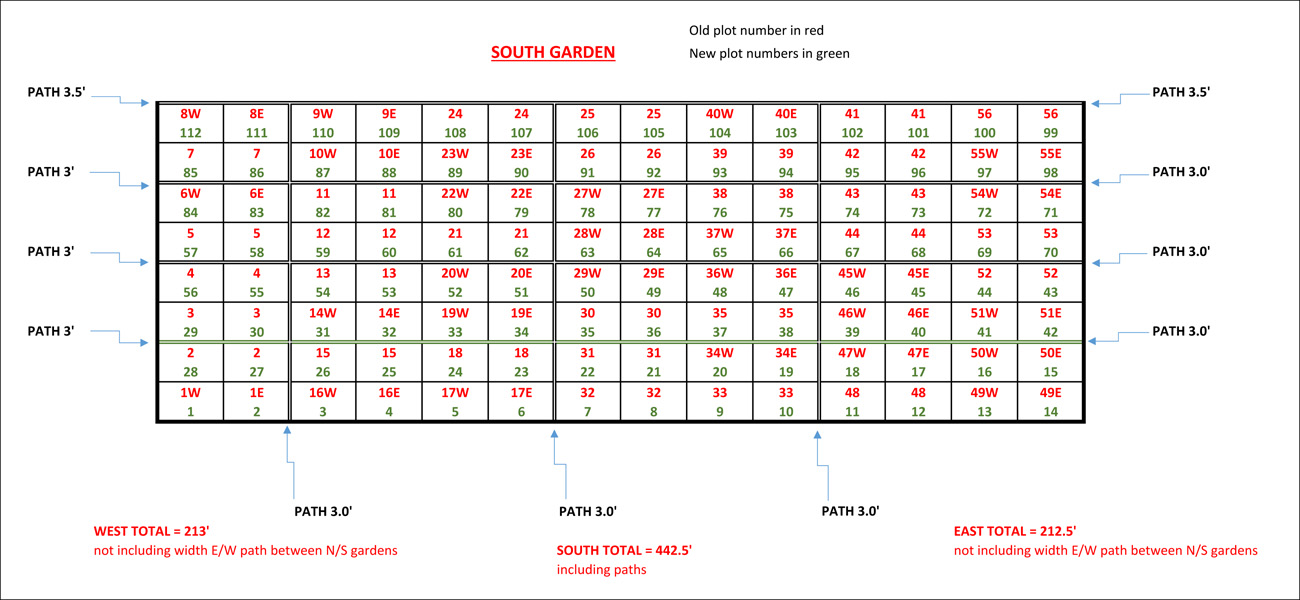
FLOWER ARRANGING GROUP
JUNE
Hard to believe that tonight was our final flower-arranging session prior to our summer break. It was a jam-packed evening with our regular demonstration & workshop program, a brainstorming session on the cuisine program theme & a signup opportunity to demonstrate for the 2024/25 year. We even included a fun social time. The conversation, treats & refreshments were certainly enjoyed. We accomplished everything on the agenda. If you were unable to attend tonight, you are welcome to let Pat know which month you would like to demonstrate once Pat forwards the final program ideas through the summer.
Anne demonstrated "Here comes the bride all dressed in white" with all her material coming from her garden. Any bride would be delighted to carry Anne's creation.
The workshop, "Bent out of Shape" produced a beautiful & interesting display of arrangements.
Thanks to Sharon & Pat for coordinating our program. Your efforts are sincerely appreciated.
Best wishes for a happy, healthy summer ladies. Hope to see everybody in September.
WORKSHOP: "Bent Out of Shape"
A structural arrangement.
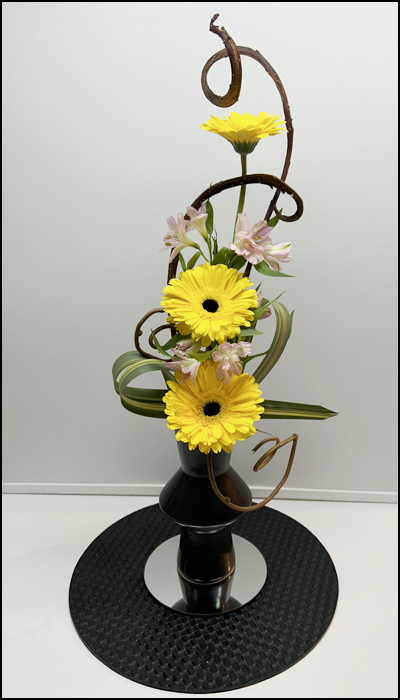
DEMO: "Here comes the bride all dressed in white"
A cascade arrangement.
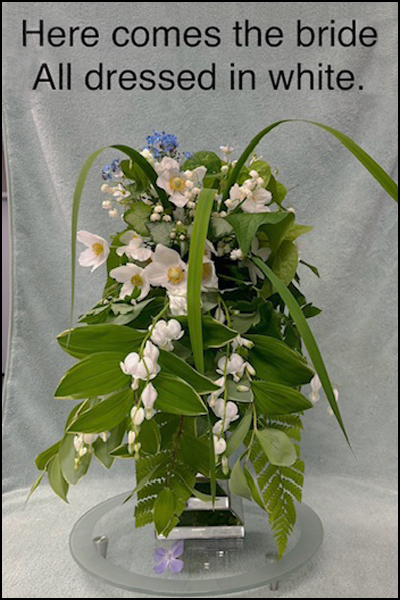
SEE SLIDE SHOW OF ADDITIONAL IMAGES
IN OUR FLOWER ARRANGING GALLERY
VVV
V
 FLOWER ARRANGING GROUP (stjameshorticulturalsociety.ca)
FLOWER ARRANGING GROUP (stjameshorticulturalsociety.ca)
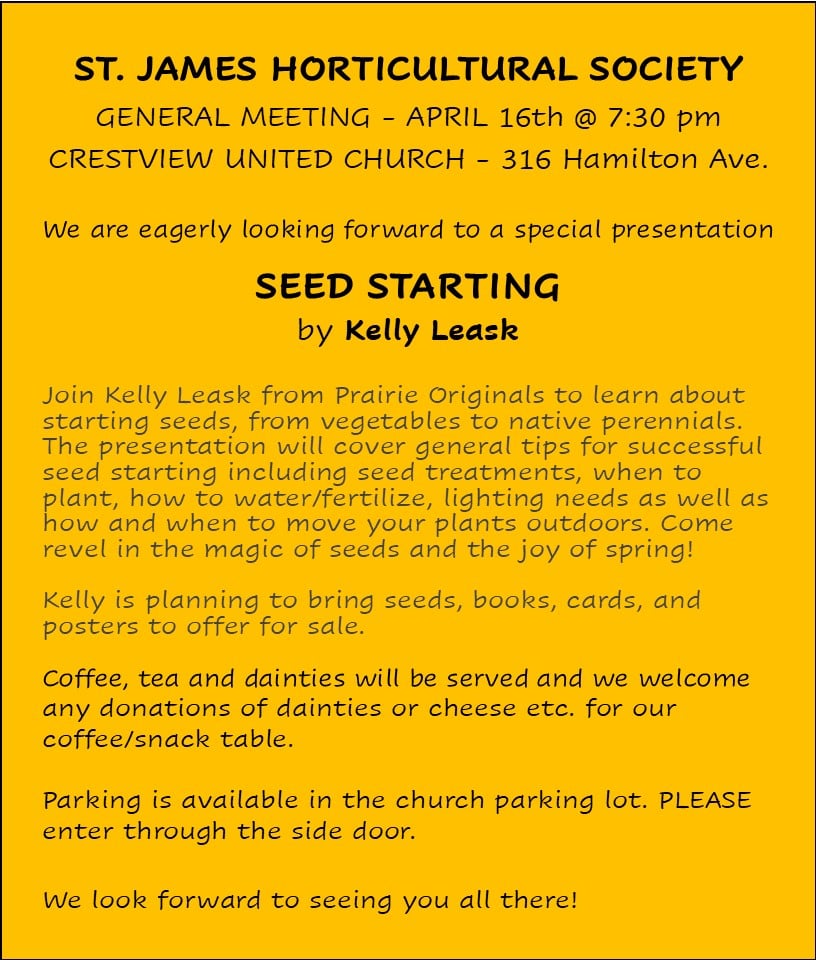
Thanks so much to MEREDITH STOESZ for her presentation "CREATING A HABITAT FOR BACKYARD BIRDS".
"It was a small but mighty group who attended.
It felt like being around the kitchen table. It doesn't get better that that!
Bravo."
Meredith provided a lovely synopsis of her presentation.
Creating a Habitat For Backyard Birds
Birds in the market for high quality habitat are looking for food & water sources, shelter, a place to raise young, and a bit of space.
The foundation of every good habitat is Native Plants like flowers, shrubs, vines, and trees. (Check out Prairie Originals!) They provide many benefits including natural food sources, shelter, and a place to raise young. If you’d like to make your yard even more attractive, adding bird feeders and water sources can really turn your habitat up to 11. Supplementary feeding is helpful for birds visiting your feeders and great for your mental health! But remember part of responsible bird feeding is cleaning feeders and baths on a regular basis. Your habitat is up and running but we can always go the extra mile for the birds! Prevent window collisions, leave those leaves on the ground in the fall, avoid pesticides and herbicides, keep cats indoors, reduce outdoor lighting during migration, and remove invasive species. The birds and bugs will thank you!
Want to learn more? Check out our website  www.wbu.com/winnipeg or visit the store at Unit 45-11 Reenders Dr.
www.wbu.com/winnipeg or visit the store at Unit 45-11 Reenders Dr.
Meredith also provided additional information regarding the tray feeder in reply to a query by Gayle.
The tray feeder is from the store and made from recycled plastic but we're currently out of stock at the moment.  https://order.wbu.com/winnipeg/bird-feeders/tray-feeders/ecotough-catch-a-seed-tray-bird-feeder
https://order.wbu.com/winnipeg/bird-feeders/tray-feeders/ecotough-catch-a-seed-tray-bird-feeder
But it easily can be a DIY project, the only negative with using wood is it's tough to keep it clean. There will be a Advanced Pole System sale in May and a feeder sale coming up in June!
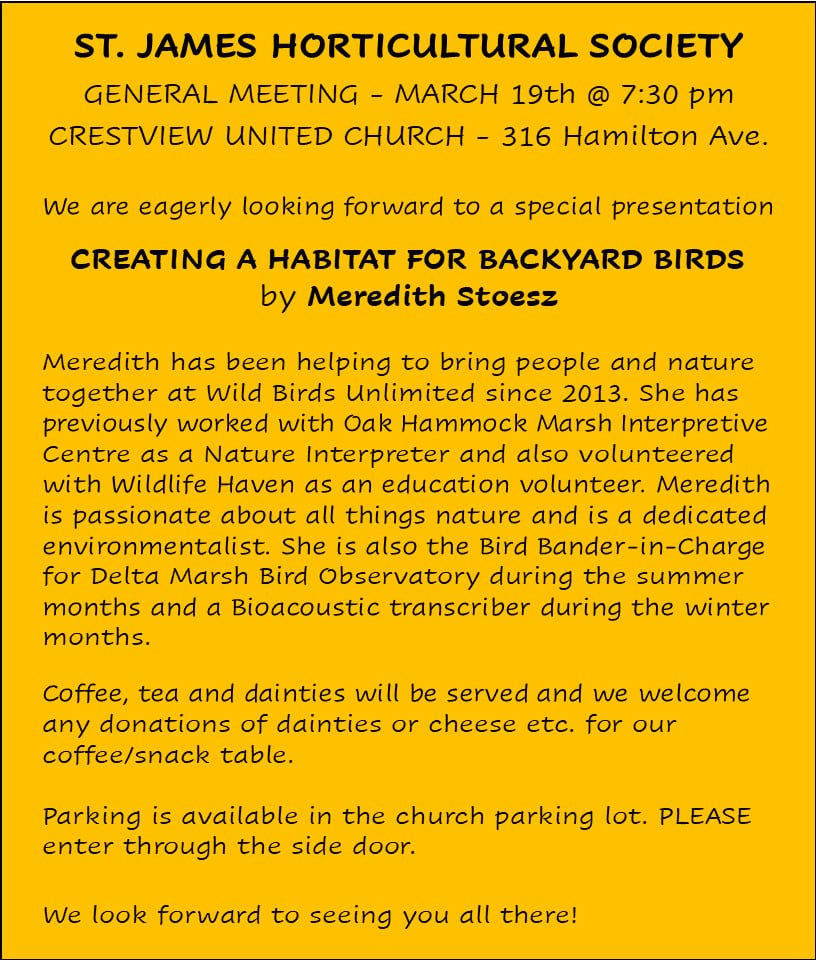
FEBRUARY MEETING OF THE SJHS
Thanks to MICK MANFIELD for his interesting presentation, “Vertical Gardening” at the February meeting of the SJHS. Mick demonstrated many interesting methods of growing vertically as well as showcasing the annuals and perennials that are suitable. He even touched on the espalier method of growing fruit trees. His discussion was most stimulating and we all learned a lot.
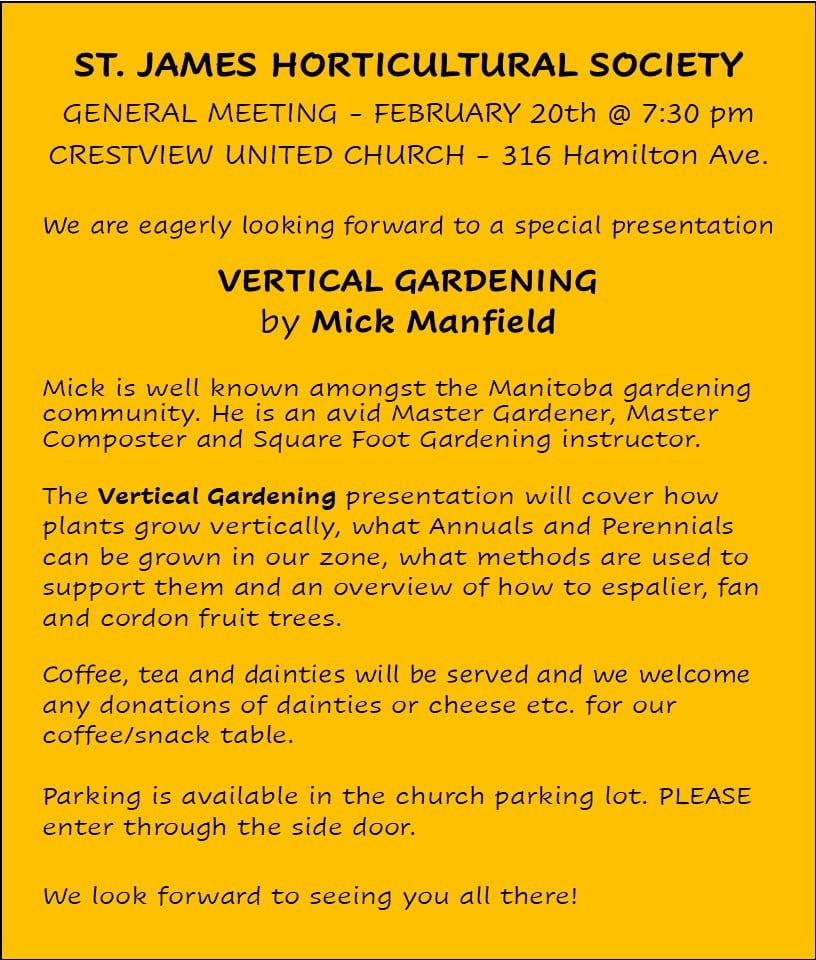
Thanks to SANDY VENTON'S for her wonderful presentation, “SHADE!!! Love it or Hate It, but Don’t Be Afraid of it!!!!!” Sandy’s amazing slide show of shade-loving plants was full of information and lovely images of plants suited to a shady location. Following is a link to a list of plants that Sandy showcased during her presentation.
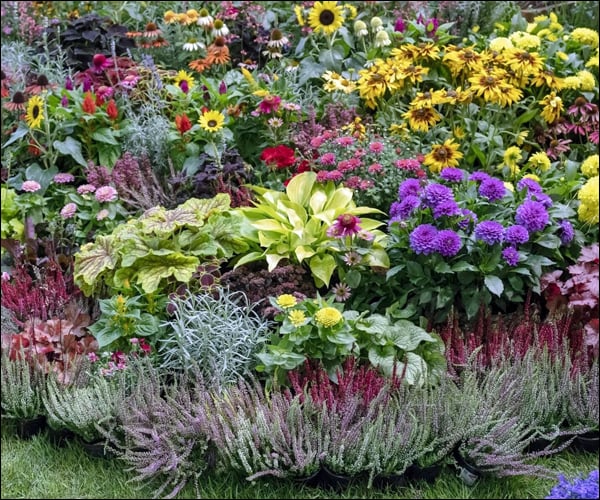
The Annual General Meeting was held on November 21st at 7:00 pm at our new Meeting Venue at CRESTVIEW UNITED CHURCH, located at 316 Hamilton Ave.
Presidents Report AGM 2022/23
It was another interesting year! The SJHS welcomed 2 new board members and with a team of volunteers worked to provide programming for general meetings, flower arrangers, grant writing, the building of pollinator and perennial gardens , preparing the gardens for the season and working on special projects. Always with the goal of sustainability in our minds.
I would like to introduce our board of volunteers that coordinated the various activities of the SJHS this year: Gayle Leverton as President, Jennifer Anderson as Past President, Iris Ingram as First Vice President, Kathryn Smith as Interim Second Vice President, Natalie Turner as Secretary, Val Carter as Treasurer, George Ingram as chair of the Garden , Sandy Venton as chair of Programming, Leah Stawiarski as chair of Membership, Linda Rudachek as chair of Communication, Pat Roberts as chair of Flower Arranging and Kathryn Smith as Interim Hospitality chair. Kathryn Smith took on the position of
(Interim) 2nd Vice President in March of 2023 after the resignation of Al Robinson.
We would like to Thank Al Robinson for his contribution to the Board before moving to Campbell River.
Thank you to the volunteers that have served on the garden committee and others who have contributed time and energy, financial donations and goods in kind, (including plants), to the numerous garden projects this year. We wouldn’t have an organization without you. We are all volunteers. Thank You!
General meetings took place during the months of January, February, March, April and October. Subjects included, “Planting a Pollinator Garden”, by Lois Grieger, “Composting “by Lori Graham, “Factors to consider in No Till & Low Till Gardening by Ted McLachlan and Rod Kueneman, “Mushroom Gardening”, by Tom Nagy, and “House Plants”, by Lori Graham.
We raised $375.01 from our annual Glenlea Plant Sale in the spring and we thank everyone who volunteered to coordinate the sale and to all who purchased plants.
We had a different start to the gardening year as our entire garden was not tilled. Some gardeners chose to till while others used different creative techniques to work the soil. Compost and wood chips were provided to help with this purpose. The garden was “alive” with exchanges of ideas and possibilities.
We had 2 Pot Luck dinners at the garden site this year. One was in July and the other in September. They were well attended and included a Flower Arranging demonstration and tours of the Shelter Belt, Pollinator Garden and the Discovery Daycare’s Pumpkin Patch.
Once again, we partnered with the Leftovers Foundation to donate excess garden produce to an organization in our neighbourhood, Turning Leaf Support Services, and also with Community Foodshare, supporting folks in St James with limited access to food. This year we started a Sharing Table set up beside the Shed, where gardeners left extra produce for others. This new endeavour was very popular.
We received two grants this year; a Nature Manitoba-Native Habitat grant for $2000.00 which provided funds for our Pollinator Garden and another from the Manitoba Community Development Green Team for $2,393.81, that allowed us to hire Lena Podolsky to help with taking care of the grounds around the gardens.
SJHS did not have an exhibition due to concerns; about the cost of running one, having enough volunteers and not having enough attendees. We did collaborate with the St Vital Agricultural Fair and unfortunately were disappointed in the SJHS response with both volunteers and participants. The board has decided to suspend the Exhibition until there is enough interest and volunteer capacity to put one on. Gardener’s interests seem to be changing more toward food security.
The Flower Arrangers met the 1st Wednesday of every month except for July, August and January. They had 9 members this year. Monthly meetings were held at Adrian Sala’s office. The meetings consisted of floral demonstrations followed by a workshop where members make an arrangement following themes from the previous month. The Theme of this year was focused on Books and many creative arrangements were made.
Thank you for your support as members of the St. James Horticultural Society!
Sincerely,
Gayle Leverton
President
St. James Horticultural Society
We were delighted to have our guest speaker Master Gardener Lori Graham at our October 17th General Meeting. Lori's presentation, "The Benefits of Houseplants", was well received by all and touched on subjects such as lighting, soil, water, pot sizes, and propagation. Lori passed out a handout about plants and the light they need to grow their best. She also provided free samples of earthworm castings for everyone. Thanks to Lori for the informative presentation.
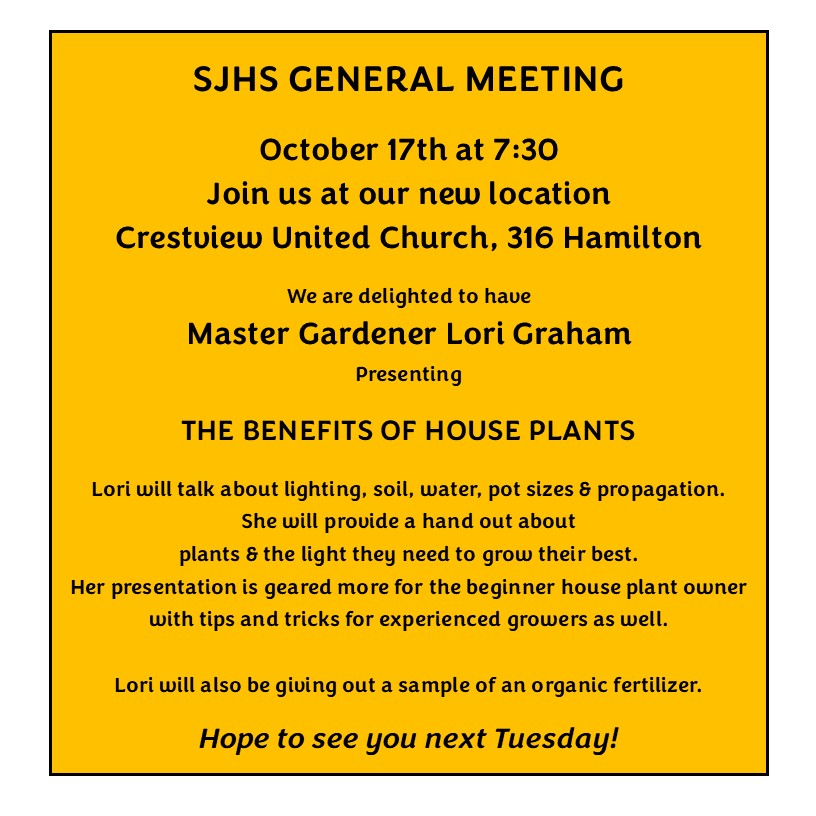

URBAN RETREATS GARDEN TOUR:
Saturday, June 22, 2024, 10:00–4:00, rain or shine.
Self-guided tour of beautiful Charleswood gardens in support of 1JustCity.
Tickets $20, available at Country Roots Market & Garden, Jensen’s Nursery & Garden Centre, Lacoste Garden Centre, Ron Paul Garden Centre, St. Mary’s Nursery & Garden Centre, Schriemers Market Centre, Shelmerdine Garden Centre and online at  1justcity.ca/garden-tour
1justcity.ca/garden-tour
Manitoba Tea, Craft & Plant Sale, $5 at the door, 10:00–2:00 at Charleswood United Church, 4820 Roblin Blvd. Ask a Master Gardener, crafters, door prizes, tea, bannock and jam. Garden tour tickets also available on June 22th at Charleswood United Church. More info at:  1justcity.ca/garden-tour
1justcity.ca/garden-tour
We gratefully acknowledge our sponsors: the Neiles Family Foundation, Sigurdson Financial Group, Arnold Bros. Transport Ltd., Canada One Travel, Charleswood United Church, Reliable Mobility, Charleswood Garden Club, Dugald United Church.

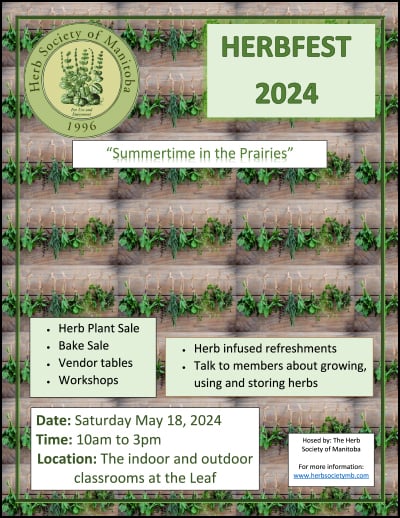
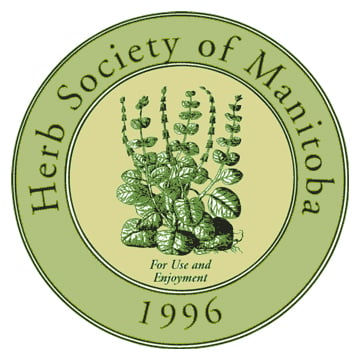
NEXT GENERAL MEETING – Herb Society of Manitoba
Date: April 15, 2024
Guest Speaker: Rana Abdulla
Topic: Edible Wild Herbs in Palestinian Cooking
Speaker Bio: Rana Abdulla, is an award winning human rights activist (Manitoba 2014), community organizer and leader, known for carrying out many volunteer activities that affected the Palestinian community across Canada. A mother and grandmother, a Chartered Professional Accountant, specializes in taxation. She is married to Rafe, a retired science teacher, key player in reviving and establishing various community organizations including Arab Canadian Palestinian Association in Ottawa and the founder of the Canadian Palestinian Association of Manitoba (CPAM), a business developer and owner of Yafa Café in Winnipeg. Rana studied in various institutions: Thompson Rivers University, University of Ottawa, St-Lawrence College and Algonquin College. Rana is a prominent volunteer and wasted no time to set out to make the lives better for Arab immigrants in Canada and was named the "one woman army" by CTV, drawing media attention to her cause. Rana is a firm believer in human equality and human rights, tirelessly advocating for justice for her people to ensure that the Palestinian narrative is depicted accurately in the West. Many refugees to Canada have benefited from her care and support. Rana is a collector of Palestinian heritage dresses and her house in Winnipeg is almost a Folk Art Museum. For the last decade, Rana has engaged and advocated patiently with the Canadian Museum for Human Rights to include the story of the Nakba, the catastrophic dispossession of the Palestinians from their land, in its exhibits and be a central focus to Palestinian human rights stories and to be named as such.
Presentation Description: Edible Wild Herbs in Palestinian Cooking
Rana will present on the flavours of the Middle East to our group. Palestinian cooking uses a variety of edible wild herbs that grow in that region. She will open our senses to a new world of tastes and aromas.
Please Note: To assist in our ongoing effort to be environmentally friendly, please bring your own beverage.
Location:
Canadian Mennonite University, South Campus
Conference Room A02
600 Shaftesbury Blvd. (south of Grant Ave.) Winnipeg, MB
Doors open 6:30 pm | Meeting 7:00 pm to 8:30 pm | Doors close 9:00 pm
Admission: Members – FREE
Non-member/guest - $5
Membership Information
Yearly Membership: Individual $25; Family: $35; Student (age 16+) $15
Meetings will be held at the Canadian Mennonite University, South Campus in Conference Room A01 600 Shaftesbury Blvd. (south of Grant), Winnipeg, MB

St. Vital Agricultural Society's Annual Display and Fair 2023
There was much to appreciate at the St. Vital Agricultural Society's Annual Display and Fair. Along with the many categories of judged entries, the exhibits and displays, the demonstrations, and the varied vendors, there was no shortage of things to do and see. Congratulations to our own Lois Ross on her success at the flower arranging competition. Compliments go to the SVAS for a spectacular annual display and fair.
The SJHS / LPM Connection
by Lois Grieger
Without the fine work of the SJHS and notably Peter de Wet - the Living Prairie Museum site at 2795 Ness Ave. might have been paved over. The efforts of SJHS in collaboration with the International Biological Program worked to secure protected status for the Tallgrass Prairie at Living Prairie Museum (1968-1976).
Members of SJHS worked with Dr Jennifer Walker (botanist from U of MB) to survey the site and develop the data to persuade St James City Council (yes this was before Unicity) to set the area aside as a nature preserve rather than build the proposed housing development. Former SJHS president Pete de Wet made an impassioned presentation before the council to preserve this rare habitat for posterity. Mr. de Wet stressed that this sliver of the prairie was the least we could leave our grandchildren. Over his long life, he must have seen some profound changes. I’m not sure how much prairie there was in 1909 when he arrived in Winnipeg from South Africa. But Mr. Wet and members of the SJHS felt it was important enough to work hard to save it. The Free Press reports the motion passed by a single vote (1971) and the first action taken by the City Naturalists was a to burn the prairie. There was outrage and a lack of understanding that tallgrass prairie ecology depends on fire and other disturbances. From the photo below it appears a fragile Mr. de Wet then 93, was at Major Juba’s side at the Living Prairie’s grand opening in 1976. Mr. De Wet passed two years later, and I like to think that the Living Prairie accomplishment capped off his gardening life. Fern mentioned she recalls Mr. de Wet. She told me when SJHS used to rotate meetings at members’ homes and Mr. De Wet looked out her kitchen window only to report he identified at least 15 different trees and shrubs. Sounds like a gardener’s gardener to me.
Given Winnipeg’s current challenges and the greater challenges presented by the climate crisis I like to tap into SJHS history to recall how through our history we SJHS members have worked in our small corner to benefit our community. And if it is true what one of my hort professor like to remind us that - “The first law of ecology is how everything is connected to everything else”, then our ecological efforts at the Silver Garden – whether it is our soil conservation efforts, planting a wind break, or planting a pollinator garden are part of SJHS’s long history of working to help connect us to everything.
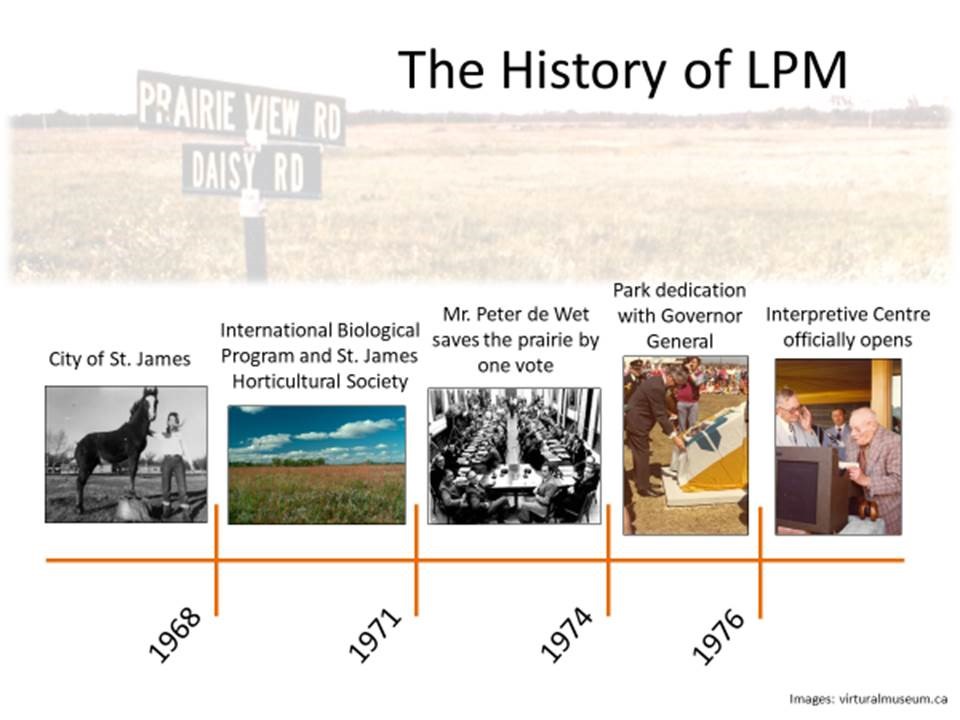
Jacobus Petrus “Pete” de Wet (1883-1978)
Journalist, horticulturist, community activist.
Born at Cape Town, South Africa on 3 February 1883, he came to  Winnipeg in May 1909. During the First World War, he served in France with the 90th Winnipeg Rifles. After his return from military service, he worked as a reporter for the
Winnipeg in May 1909. During the First World War, he served in France with the 90th Winnipeg Rifles. After his return from military service, he worked as a reporter for the  Winnipeg Free Press and provincial correspondent for the Canadian Mining Journal. He was Secretary of the Manitoba Chamber of Mines and editor of its journal, The Precambrian. During the Second World War, he served with the St. John Ambulance Brigade in Winnipeg. He held honourary life memberships in the Canadian Institute of Mining and Metallurgy,
Winnipeg Free Press and provincial correspondent for the Canadian Mining Journal. He was Secretary of the Manitoba Chamber of Mines and editor of its journal, The Precambrian. During the Second World War, he served with the St. John Ambulance Brigade in Winnipeg. He held honourary life memberships in the Canadian Institute of Mining and Metallurgy,  Manitoba Horticultural Association, and St. James Horticultural Society, and was a member of the
Manitoba Horticultural Association, and St. James Horticultural Society, and was a member of the  Canukeena Club,
Canukeena Club,  Winnipeg Horticultural Society (President, 1957), Manitoba Association of Prospectors and Developers, and Manitoba Progressive Association. He died at the
Winnipeg Horticultural Society (President, 1957), Manitoba Association of Prospectors and Developers, and Manitoba Progressive Association. He died at the  Deer Lodge Hospital on 27 August 1978.
Deer Lodge Hospital on 27 August 1978.
Restoring Truro Creek
One Pulled Thistle at a Time
by Kathryn Smith
This past summer I spent about 30 hours pulling thistle along the banks of Truro Creek. I worked on the area adjacent to Wightman Green at the corner of Linwood and Ness. Wightman Green is the park I adopted 3 years ago. By adopting a park you can help take care of it in a variety of ways. I chose to establish 3 beds of native perennials. I sourced these from plants growing in my own garden. One of them being Swamp Milkweed. While it is a beautiful and hardy plant, it is not particularly drought tolerant therefore not best suited for the middle of the park. I contacted Rod Penner, the City Naturalist. He agreed they would be suitable for naturalizing on the creek bank. His associate dug 12 holes and I planted and watered. They were large transplants and thrived. That very summer they were covered in Monarch caterpillars.
By the next summer,2022,with the help of adequate rainfall, the park gardens were well established. I turned my sights on the ugly thistle patches that border the park and the creek. It didn’t make sense to cultivate a lovely garden and leave invasive thistle next to it. Ironically named Canada Thistle , it is not indigenous to Canada but introduced from Europe hundreds of years ago. It is invasive and crowds out native species that provide a better food source for pollinators and birds. I again contacted Rod and a plan was made to pull the thistle then replant with native species. The thistle should be pulled for 3 years to weaken it enough that the new plants stand a chance. It is best to start pulling early July when it starts to bud.
Wearing a thick pair of gloves and long sleeves, I chose a shady spot to begin my labor. To my surprise , thistle pulls out quite easily using a two handed tug. Of course you don’t get all the roots , that’s why it must be pulled for three years. Every pull weakens it a little more. I found it strangely satisfying yanking at the bristle stems watching the pile of dead thistle grow. Until my back told me that was enough for the day. One day some one from Parks and Open spaces showed up with a couple of young volunteers from the Boys and Girls Club. They worked hard and cleared a lot of thistle , returning later to truck it away.
After clearing thistle from the park edges, I moved further along the creek working on it until mid September. Except for one small area I cleared the creek bed of thistle between Linwood and Winchester. A small area relative to the length of the creek but that is what one person can do. I imagine great progress if a few others pitched in , for even a few hours. I felt I had contributed to the improvement and enhancement of the creek bank habitat. Once the new planting goes in it will become a habitat where, butterflies and birds will thrive and it makes the walk by the park so much more enjoyable.
I never realized that the public could work so closely with the City. That we could have such an important role to play in the state of our green spaces. A better way to live and enjoy your community is by being active in the improvement rather than to complain about the lack of maintenance. If you would to help in the effort to restore Truro Creek to a healthy natural state please feel free to pitch in and pull. It would be wonderful to have more people involved as there is so much that could be accomplished. You can contact myself, Kathryn, through the St. James Horticultural Society at  stjameshort@gmail.com or come to the next General Meeting Feb.21. and talk to me. I am the Hospitality Person so I’ll be hanging out by the coffee urn.
stjameshort@gmail.com or come to the next General Meeting Feb.21. and talk to me. I am the Hospitality Person so I’ll be hanging out by the coffee urn.
APPLICATION / RENEWAL FORM
INTERESTED IN BEING A MEMBER OF SJHS?
Membership Application below (fillable form)
Send to: stjameshort@gmail.com
| |
ABOUT US
The ST. JAMES HORTICULTURAL SOCIETY provides occasions for interested individuals to compare notes and share information through its programs. We look forward to seeing you at our monthly meetings.
We endeavour to make our meetings interesting and would appreciate suggestions for future meetings.
If you are interested in horticulture and would like to be part of our program, please contact the Program Chairperson.
General meetings of the ST. JAMES HORTICULTURAL SOCIETY are held the 3rd Tuesday in the months of October, November, January, February, March and April at 7:30 p.m. General Meetings of the ST. JAMES HORTICULTURAL SOCIETY are held the 3rd Tuesday in the months of October, November, January, February, March and April at 7:30 p.m. at Crestview United Church, 316 Hamilton.
Most meetings showcase a speaker presenting relevant topics of interest to society members.
Parking is available in the church parking lot. Please enter through the side door.
Coffee, tea and dainties are served. We welcome any donations of dainties or cheese etc. for our coffee/snack table.
The FLOWER ARRANGING GROUP meet at 7:30 pm the first Wednesday in the months of September, October, November and December, February, March, April, May and June at the office of Adrien Sala, MLA.
The St. James Horticultural Society, the second oldest horticultural society in Manitoba, was organized in November, 1914 by 13 St. James Gardeners. This was the year of the outbreak of the First World War when the call went out that all should supply their own individual needs with Victory Gardens and many plots were put under cultivation during the war years.
In November 1929, the Society applied to the Manitoba Government for a Certificate of Organization under the Manitoba Horticultural Societies Act, and received Certificate No. 8, dated December 1, 1929.
Around 1938, the St. James municipal council allowed the Society the use of a tract of land in the north part of the city which was divided into parcels of 30 feet by 60 feet for annual competition by members. This tract has been under cultivation right up to the present time.
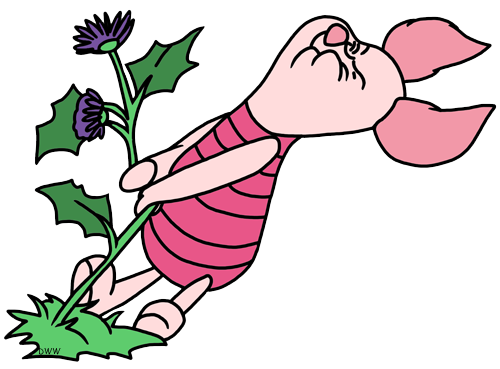
HOW TO START GARDENING
1. The garden plot can be covered with clear plastic for at least 6 to 8 weeks or more, making sure the plastic is solidly fixed down so the wind doesn’t get under the plastic and blow it away or tear it. This approach will heat or bake the top layer of soil so some roots and rhizomes are killed. However, roots and rhizomes growing at 5” to 6” or more below the soil surface may not be killed. Monitoring for weed emergence and immediate control will be required.
2. Similar to the approach above, the garden plot can be covered with cardboard. The cardboard would need to be solidly fixed down so the wind does not get under the cardboard and blow it away or tear it. This approach will deprive the weeds of sunlight so they eventually run out of energy, starve and die. The cardboard cover would be needed for the entire growing season to have the best success.
3. Another option similar to #2 above would be to lay down cardboard, and then cover it with topsoil and compost. Last year some gardeners had success growing very nice gardens by laying down cardboard and placing 12" or more topsoil and compost on top of the cardboard. However some gardeners were not as successful, likely because the plot was not fully covered with cardboard and had less than 12” of topsoil and compost.
Regardless of the option you select, ongoing persistence is required from year to year to stay on top of the weeds. Normally, it is easiest to control weeds, whether they are annuals or perennials, by removing them when they just emerge. It requires much more work to remove weeds once they are more mature, 3” to 4” or more.
The U of S material on no-till gardening has some good tips (see the link in the garden guidelines). They recommend that an attempt be made to control perennial weeds before starting no-till. After weed control, one can place up to 2" of compost on top of the planned rows, then lay down a minimum of 4" to 6" of chopped mulch (straw, leaves, dried lawn clippings). They indicated that if there are lots of perennial weeds, one could place and maintain up to 12" of mulch.
Please contact the Garden Committee by email if you have any questions.
